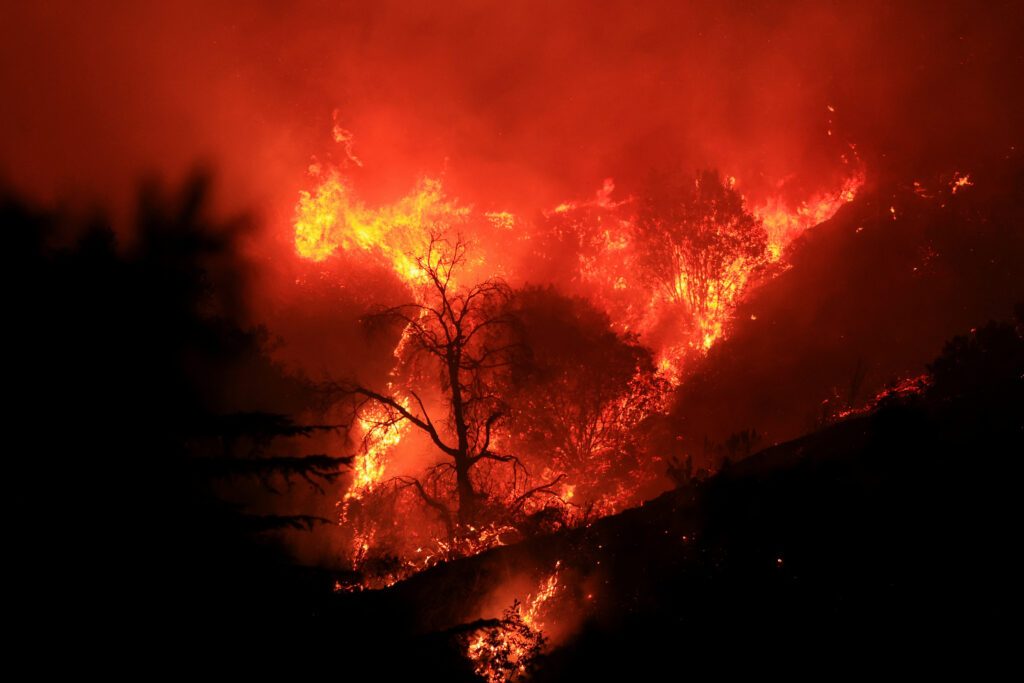Images of burnt-out homes stretching across charred neighborhoods. The choking smell of acrid smoke filling the air. Stories of harrowing evacuations and, too often, stories of loss—lost friends, lost family members, and lost memories. Americans are becoming more and more used to these scenes. The US National Oceanic Atmospheric Administration finds that climate change is lengthening the fire season and increasing the frequency of severe fires.
A single event, such as the Maui fire of August 2023 or the California Camp fire of November 2018, can kill one hundred residents or more. Since 2005, more than one hundred thousand buildings across the United States have been destroyed by wildfires. According to the US Congress Joint Economic Committee, the cost of wildfires is estimated to be between $400 billion and $900 billion annually. Such devastating consequences demand that wildfire responders in the United States be equipped with the very best technology and systems. But the sad truth is that they are not.
A report by the President’s Council of Advisors on Science and Technology in February 2023 noted that while a technology revolution greatly benefiting most of American life has taken place over the past twenty-five years, too many firefighting technologies have remained in a time warp dating back to the mid-twentieth century.
Innovation without integration
The problem is certainly not a lack of technical innovation in the United States. In fact, commercial companies are sensing the needs and responding by developing and marketing an array of potentially useful products, and some of these products are even finding their way to the field. Autonomous sensor lookout towers have been situated in some forests. Sensors on drones and satellites are being engineered and proposed. Satellite-enabled communications, a vital tool for communicating across rugged terrain, have become commercially available but are not abundantly deployed.
Industry and academia have been working to mature computer simulation models of wildfires with the hope of continually assessing fire risk and predicting the growth paths of active fires. These predictions would be an invaluable aid to decision makers, particularly when they must decide whether a fire should be allowed to burn as a beneficial method of removing fuels from the forest. The commercial sector has also been hard at work creating several options for cutting-edge graphical displays showing a fire’s characteristics on the local geography relative to the positions of firefighting resources and the general public. Technology entrepreneurs and talented engineering teams are eager to fulfill the needs of wildfire organizations through the sale of wildfire support products and services. A key barrier for private industry, however, is the lack of a central US government purchasing organization. Marketing new technical solutions across the large group of government agencies makes business plans and investment decisions complex and risky.
Perhaps the most significant advancement in wildfire intelligence in recent years has been brought about through a Department of Defense program that makes use of military satellites to image wildfires and relay the information to participating wildfire agencies. The Department of Defense program, which is spearheaded by the National Guard and known as Fireguard, was expanded by Congress in 2019.
Fireguard has been a game changer, providing participating wildfire organizations with frequent reports of fire-line positions and other detailed information. Updates to connected command posts are now being received every few minutes. This is a vast improvement over previous systems, which until recently made updated information available only once or twice per day, when a sensor-equipped aircraft could be scheduled. Combining Fireguard’s space-based imagery data with commercially provided fire-mapping applications has proven to be instrumental for pioneering wildfire intelligence organizations in California, Colorado, and some other US states, giving a glimpse into the benefits of an integrated approach. Unfortunately, Congress has yet to make Fireguard an official program of record within the Department of Defense, so it is unclear what the future holds for this now indispensable resource.
Barriers to progress
So why isn’t a common suite of innovative technology deployed across the United States today?
The primary answer lies in the fact that wildfire management responsibility is spread across many federal agencies and jurisdictions, fifty states, and countless counties and local communities, none of which has the defined responsibility to put together an integrated system for the nation. In the absence of a well-funded leading agency, a highly federated set of largely independent firefighting information systems has developed over the years. This presents several challenges.
- Each separate organization does not have the resources to effectively develop and deploy a fully integrated wildfire intelligence system. This results in partial progress and the duplication of efforts across jurisdictions.
- Agencies are often not effectively sharing data and information among their systems due to organizational stovepipes, differing data policies, and a limited budget available for integration efforts.
- Firefighters are often deployed from their home bases to locations across the country. The use of different tools and systems between jurisdictions drives the need to retrain, reducing firefighter effectiveness and efficiency.
- The agencies performing technology development are typically also responsible for supporting wildfire response, making it impossible to maintain steady progress.
Fundamentally, the highly federated wildfire agency structure that is in place across the United States does not lend itself to successfully integrating a nationwide system.
How can the US accelerate wildfire intelligence modernization?
Congress must select a lead agency charged with developing and operating a modern, nationwide wildfire intelligence system that can serve firefighters from Alaska to Texas, from Florida to Maine.
This will be a major undertaking given the breadth and overall engineering complexity of the project, which must cross numerous jurisdictions and agencies, as well as many existing legacy systems. There are plenty of lessons to be learned from similar technically challenging integration projects, such as the formation of the Department of Homeland Security and the development of National Missile Defense.
Some in Congress recognize the need for a more integrated approach to US wildfire response and are moving proposed legislation forward. “The lack of centralized coordination and integration of systems to mitigate and quickly extinguish increasingly frequent and dangerous wildfires is unacceptable,” Senator Alex Padilla of California told me. “I am committed to implementing a whole-of-government approach that works with private industry to increase preparedness and our response to wildfires.”
Moreover, this is an issue that is ripe for bipartisan collaboration. The key to success will be for leaders to identify the scope clearly, grant the selected agency full responsibility, accountability, and authority with a commensurate budget, and assure that the community of firefighters has a strong voice in the process.
At present, an array of agencies each play a role in the federal government’s wildfire management. This includes the Department of Agriculture’s Forest Service; the Department of the Interior’s US Geological Survey, National Park Service, Bureau of Indian Affairs, Bureau of Land Management, and Fish and Wildlife Service; the Department of Homeland Security’s Federal Emergency Management Agency; the Department of Commerce’s National Oceanic and Atmospheric Administration, and the National Aeronautics and Space Administration, among others. There will likely be extensive debate over which among these or other agencies and stakeholders should be given the leading role, and there are several good options to choose from. But during this necessary debate, lawmakers should remember that there is an urgent need requiring decisive action. With a growing threat from wildfires, and a real opportunity to save lives and property, there is no time to lose.
Dan Hart is a nonresident senior fellow with the Atlantic Council’s GeoTech Center.
Further reading
Wed, Aug 14, 2024
The case for the United States and China working together in space
New Atlanticist By Dan Hart
Washington and Beijing should work to revive the idea that the exploration of space should be undertaken for peaceful purposes.
Mon, Aug 19, 2024
NATO wants to be a leader on climate security. Here are the next steps to get there.
New Atlanticist By
To adapt to the impacts of climate change on global security, NATO must improve how it incorporates climate security into its training and operational planning.
Thu, Jul 25, 2024
The world is sleepwalking into an era of extreme heat. The UN just issued a wake-up call.
New Atlanticist By Eleni Myrivili
The UN secretary-general‘s Global Call to Action on Extreme Heat underscores the urgent need for actionable heat-related policies worldwide.
Image: Smoke and flames billow from the Mountain Fire in Santa Paula, California, November 6, 2024. REUTERS/David Swanson.



